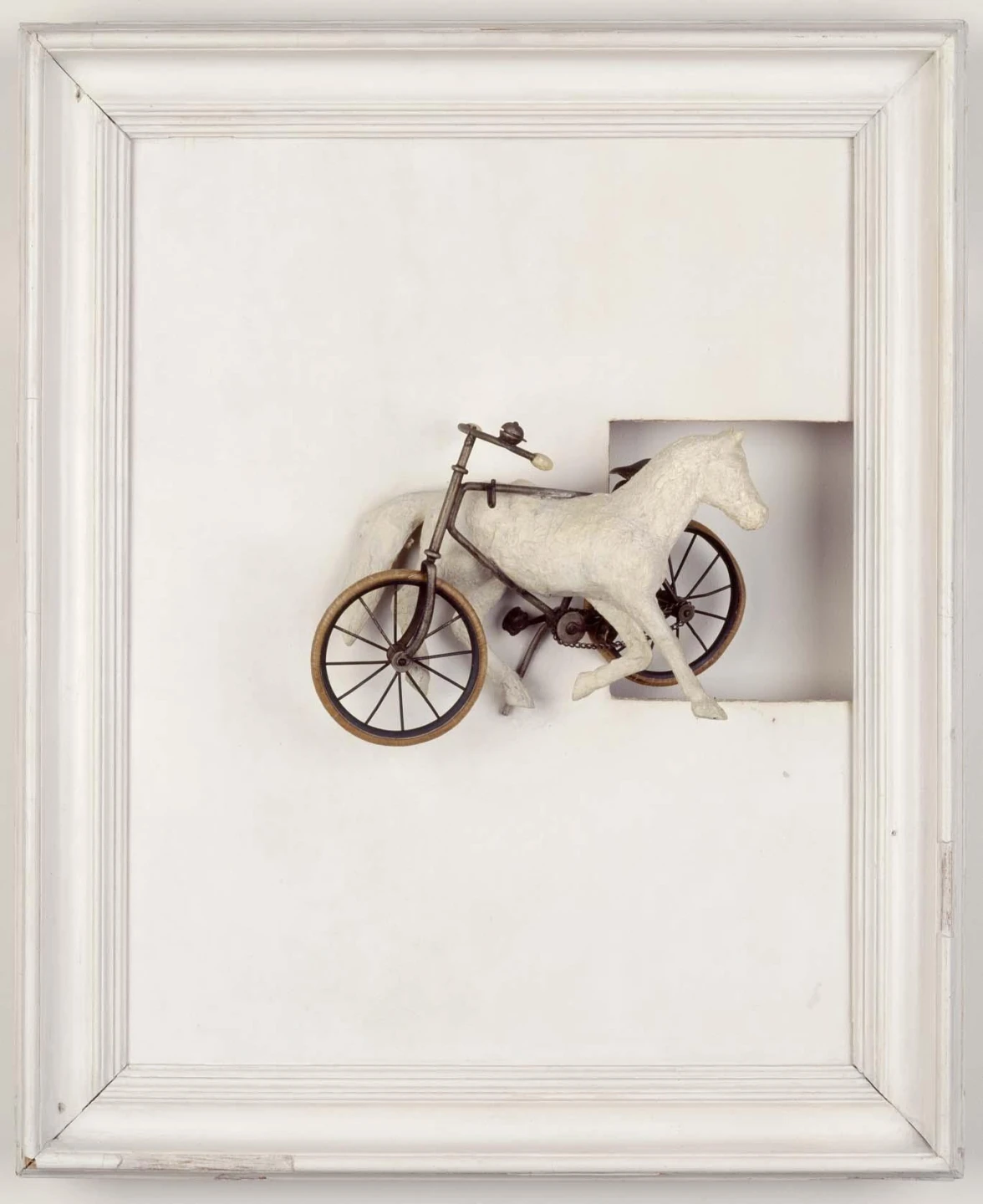Óscar Domínguez. Anthology. 1926-1957

<p></p>
After his move to Paris in 1932, exhibiting his Surrealist paintings in Tenerife in 1933, the following year he becomes part of the Surrealist circle where he develops decalcomania, an automatic technique that involves pouring diluted black gouache between two sheets of paper, which are then pressed gently together. Domínguez' other personal contributions are the objects-monuments of humour and sadism (appropriately arising after Breton writes about the crisis of the object), cosmic landscapes and the theory of the solidification of time, or the “lithochronism” he formulates with the Argentinian writer and artist, Ernesto Sábato.
Ana Vázquez de Parga, the curator of this anthological exhibition, arranges the work by theme and time period: Surrealist (1929-1938), cosmic (1938-1939), lithochronism (1939-1942), metaphysical (1942-1943), Picassian (1944-1948) and schematic (1949-1953). The display of over one hundred and sixty of Domínguez' paintings in diverse time periods illustrates how, even though in 1942 he ultimately moves away from Breton's approaches and Dalí's figurative system, in the words of art critic Fernando Castro Flórez, “he never stops being a Surrealist painter as the iconography in Surrealism is nothing but a reflection of the position of the artist in the world, something which does not change in him from the time he moves to Paris until his tragic death.” Likewise, the art critic José Pierre also stresses how at the beginning of the Thirties Domínguez establishes what would become his vocabulary of images, which “most of the time abide by the laws of Freudian symbolism”, but later become prevalent to form his own particular imagery. Certain familiar objects pervade his work, for instance the safety pin, the piano, the alarm clock, the lock or the tin of sardines and tin opener in L´ouvre-boîte (1936), Caja con piano y toro (1936), Femmes aux boîtes de sardines (1949) and Revólver (1952).
In the Forties, the artist, always supported in external references, regains his preference for colour and starts to realise paintings dominated more and more by drawing and rigorous geometry. After the Second World War, his style, although always his own, reveals clear and voluntarily stylistic and thematic references to Pablo Picasso, as seen in works like La voyante (1944), Bodegón del gallo (1945) and Caballo de Troya (1947). From this moment he uses triple-trait painting, in which the contour line is doubled with an unpainted margin separating the colour of the closest line, for instance in Tauromaquia (1948) and Pájaros aviones (1950). Therefore, Domínguez' painting moves progressively from poetic experimentation and automatism to a more artistic and formal experimentation.
Artists
Centro Atlántico de Arte Moderno, Las Palmas de Gran Canaria (January 23 - March 31, 1996); Centro de Arte La Granja, Tenerife (April 19 - May 18, 1996)
Organised by
Centro Atlántico de Arte Moderno, Las Palmas de Gran Canaria
Image gallery

Itinerary
Centro Atlántico de Arte Moderno Caam, Las Palmas
23 January, 1996 - 31 March, 1996
Centro de Arte La Granja, Santa Cruz de Tenerife
19 April, 1996 - 18 May, 1996
Museo Nacional Centro de Arte Reina Sofía
25 June, 1996 - 16 September, 1996